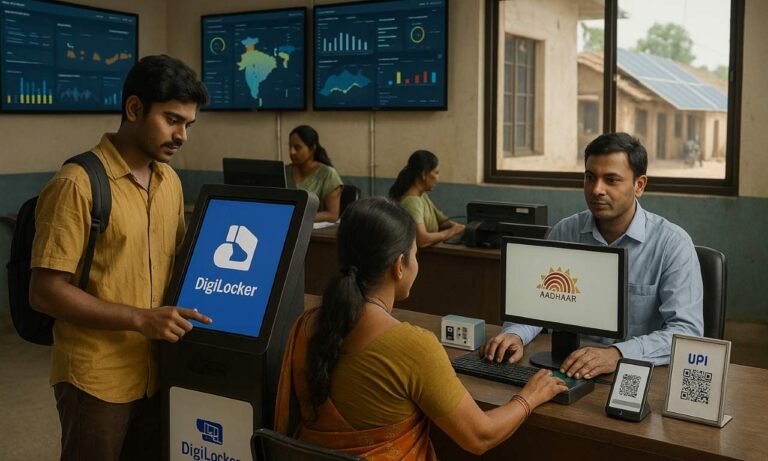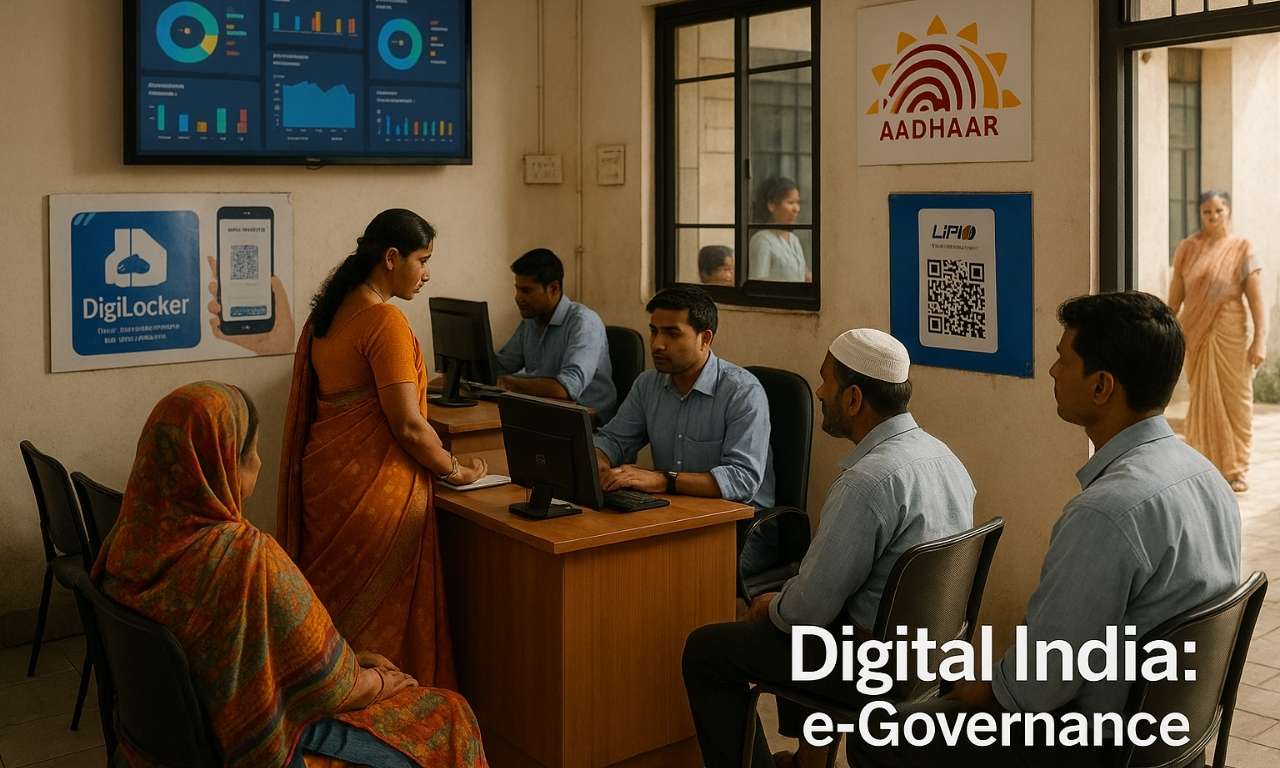The government’s ongoing efforts to expand Digital India initiatives and strengthen citizen-centric online services highlight India’s rapid shift toward digital and transparent governance.
E-Governance
- e-Governance refers to the application of Information and Communication Technology (ICT) in public administration to make governance more transparent, efficient, participatory, and accountable.

Objectives of e-Governance
- Transparency: Digital records and audit trails curb corruption.
- Efficiency: Automation reduces delays and improves service delivery.
- Inclusivity: Ensures access for rural and marginalized groups.
- Accountability: Real-time monitoring enhances responsibility.
- Affordability: Cuts administrative costs for both government and citizens.
Phase I – Foundation Stage (Before 2000)
- NIC (1976): Introduced computerization in government departments.
- NICNET (1987): India’s first satellite-based government network.
- Early systems like computerized railway booking and Income Tax data boosted administrative efficiency.
- e-Seva (1999, Andhra Pradesh): One-stop digital service delivery for citizens.
Phase II – Expansion Stage (2000–2014)
- Landmark projects: Gyandoot (MP) for rural communication, Bhoomi (Karnataka) for land records, FRIENDS (Kerala) and Lokvani (UP) for citizen services.
- National e-Governance Plan (NeGP, 2006): Built the national digital infrastructure via
- Aadhaar (2010): Introduced digital identity for welfare delivery. Faced issues like poor internet access and limited scalability.
Phase III – Integration and Ecosystem Building (2015–2019)
- Digital India (2015): Shifted focus from service delivery to digital empowerment.
- JAM Trinity (Jan Dhan, Aadhaar, Mobile): Enabled direct benefit transfers.
- India Stack & UPI: Revolutionized digital finance and authentication.
- UMANG, DigiLocker, e-Kranti, and DigiYatra: Integrated service platforms connecting citizens to government digitally.
Challenges and Concerns
- Digital Divide: Rural areas still face connectivity and literacy gaps.
- Cybersecurity Risks: Data breaches and online frauds threaten trust.
- Language Barriers: Most platforms favor English over regional languages.
- Resistance to Change: Lack of digital skills among officials hampers adoption.
- Inter-departmental Gaps: Limited data sharing reduces efficiency.
Policy Support
The Ministry of Electronics and IT (MeitY) promotes policies like:
- Open Source adoption,
- Cloud-based applications,
- Open APIs for seamless integration,
- Data and email security frameworks.
Conclusion
e-Governance has redefined the relationship between state and citizen, making governance more accessible, transparent, and participatory.
This topic is available in detail on our main website.





